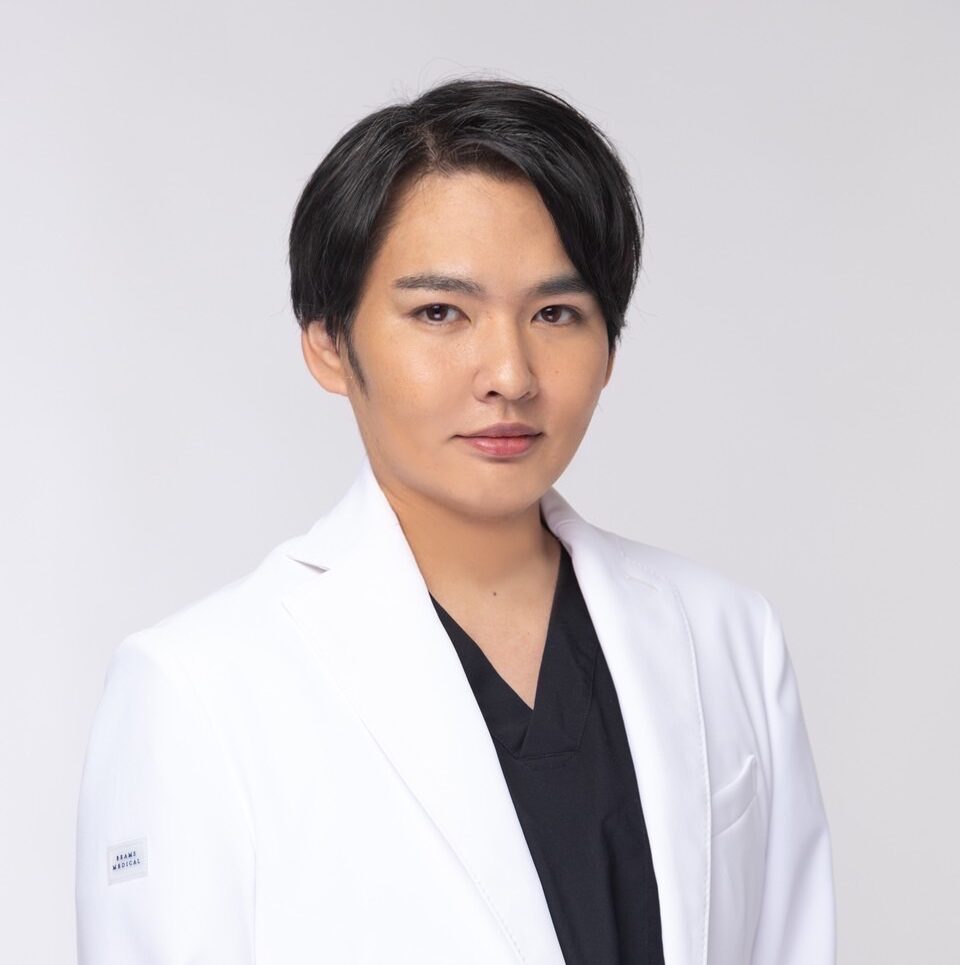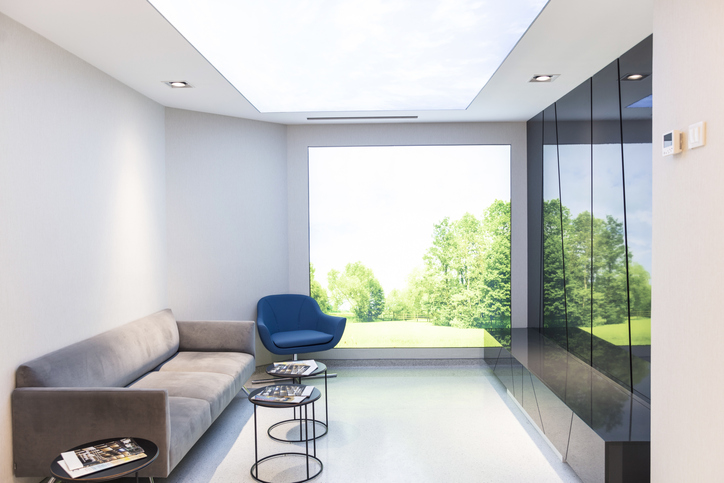Every time you look in the mirror, you suddenly notice the distance from your mouth to your nose. With a change of just a few millimeters, the overall impression of the face is refined and shortened in people. While you are fascinated by the dramatic effect, your mind is still bound by a single but deep-seated fear: "Will the scars really be cleaned up?" is the only but deep-rooted anxiety.
The Internet is full of success stories of people who have become beautiful as if by magic, as well as stories of failure that are painful to watch. Many people are so inundated with information that they don't know what to believe, and many have fallen into search fatigue, sighing after each search.
Here is a thorough explanation of the medical truth about human midline shortening scars. From the deep psychology of why people are anxious about scars, to the realistic postoperative process, how to spend downtime, and the criteria for making wise choices to avoid regrets. By the time you finish reading this book, your vague fears will have been transformed into concrete knowledge, and you will have a clear path on how you should act.

Graduated from the Faculty of Medicine, National Kumamoto University. After serving as the director of major beauty clinics in Japan, etc., he opened Aladdin Aesthetic Clinic in 2023. He is a professional in aesthetic medicine with a doctorate in anti-aging research and many years of experience. With the motto of "Toward the realization of cosmetic medicine without lies," he aims to be the "Only One" together with his patients.
- Why is a scar with a shortened human midsection so unsettling?
- Where can you get a scar for shortening of the human middle? Medical Truth and Progress
- Let's imagine what life will be like after a human shortening surgery! Overview of Downtime
- How can I get a wise procedure to avoid regrets from shortening the human body?
- Risks other than scarring and how to prepare for the eventuality
- summary
Why is a scar with a shortened human midsection so unsettling?
The more we research the procedure, the more we are concerned about the scar, as much or more than we expect, and this feeling is common. Let us pause here and explore the essence of why our hearts are so stirred by scars.
This is not just an explanation of cosmetic medicine. This is a time to carefully unravel the inner workings of your mind and determine the true nature of your vague anxiety. By understanding the mechanism of your own mind, you will be able to regain a calm axis of judgment and take the first step toward not being swayed by information.
The obsession and spell of "perfect beauty" that binds the mind?
Those who are considering shortening the human midline must have a deep understanding of their own facial balance and have a clear image of their ideal image, which would be if it were just a few millimeters shorter.
However, this strong commitment can sometimes become a "curse" that binds you. Especially for those who consider their face as a "work of art" and seek perfection, the scar element is an immeasurable fear. What if there is even one unintended line in a work of art that has been painstakingly finished? They would find that unacceptable.
Scars in human midline shortening are precisely this uncontrollable line. Although it is possible to make it as inconspicuous as possible through the skill of the physician and postoperative care, it is impossible with modern medicine to completely reduce it to "zero. The fact that this "area beyond one's control by one's own efforts and will" exists clashes with the desire to be "perfect" and creates great anxiety.
The root of this fear may not be simply a matter of the appearance of the scar, but may be a deeper level of identity-related fear that the image of the ideal, perfect self may be tarnished.
Tiredness and loss of judgment brought on by information overload
Social networking sites are filled with breathtakingly beautiful photos that have been created using special lighting and image processing. While these photos give us hope, we unconsciously set a very high hurdle in our minds that this is the norm. On the other hand, images of a few extreme cases of failure, or of reddish scars in the early postoperative period, once seen, are burned into the mind and create the illusion that they will happen to you.
By being continuously showered with information from these two extremes, we lose sight of the "average progress" and "objective facts" that we should have, and we lose our axis of calm judgment. We may then get lost in a loop with no way out, continuing to search further for solid answers.
This is the true nature of "information fatigue" as described by many experienced people. It is a phenomenon that can happen to anyone, caused by the "flood of information" peculiar to the modern age. What is important is to regain a proper sense of distance from information.
Where can you get a scar for shortening of the human middle? Medical Truth and Progress
In the previous chapter, we unraveled how your anxiety about the scarring of human midline shortening is due to your own "obsession with perfect beauty" and "flood of information". Now that you have prepared your mind, it is your turn to resolve those fears with concrete knowledge.
Here, for a change, we will focus on objective, medical facts and thoroughly explain "where" and "how" scars are formed and how they develop. No more being bombarded with vague information. Correct knowledge will be your most reliable compass to guide you to a calm decision.
Scar location and design|This is how the incision line is determined.
First, to answer the question that most concerns us, "Where on earth will the scars be?" I will answer this question. In the "subnasal incision" method, which is currently the mainstream method for shortening the middle of the nose, as the name implies, the scar will be located just below the nose. Specifically, the incision line is designed to follow the groove at the base of the nose and cross the base of the nasal bridge (the wall separating the nostrils on either side).
Why this location? It is because physicians take full advantage of the anatomy of the face to make the scar as inconspicuous as possible. There are elements that originally exist under the nose that camouflage the scar, such as the shadows at the base of the nose, the border of the skin color, and the three-dimensional structure of the nose. Instead of just removing the skin, an experienced doctor will precisely superimpose the incision line on these lines and shadows, making the postoperative scar appear as if it were part of the wrinkles and shadows that were there originally.
Furthermore, the design is custom-made and fine-tuned to suit each individual's facial features. For example, the incision may be slightly extended along the rim of the nose to make the scar look more natural, or part of the incision line may be placed inside the nostrils (nasal cavity) to minimize the length of the scar visible from the front. This is truly an area where the doctor's aesthetic sense and surgical skill come together.
Full timeline of the scar's progress
The scar of human midline shortening is not completed the moment the surgery is over. Its appearance will change over time as the skin heals. It is very important to know the postoperative process so that you can spend your downtime calmly and not be saddened by the day-to-day changes.
The following table provides an approximate timeline from postoperative to scar maturity to give you a concrete idea of what to expect.
| time | Scar condition | General Care | important point |
|---|---|---|---|
| Postoperative ~ 1 week | Intense redness, swelling, and presence of sutures. | Application of prescribed ointment and care with protective tape. | Avoid large mouth movements to avoid straining the wound. Be careful not to get the wound wet. |
| After 1 month | Redness remains but gradually subsides. The wound may become hard (contracture) or slightly raised. | Thoroughly protect against ultraviolet rays (UV care). Keep moisture in the skin. | Avoid rubbing or massaging the wound too hard. |
| Three to six months later | The redness begins to recede further, passing through a brownish tinge (pigmentation) and gradually approaching skin tone. The hardness of the wound also eases. | UV protection should be continued. If necessary, oral medications to improve pigmentation may be prescribed. | If you have any concerns, see your doctor regularly to have your scars checked. |
| Six months to one year later | The scar "matures" and settles into a thin white line. In most cases, the level of coverage will be sufficient with makeup. | UV protection should be provided throughout the year. | In many cases, the scar is near completion in this stage of condition. |
In particular, the hardness and swelling of the wound seen from one to three months after surgery is called "contracture," and is a normal biological reaction that occurs during the healing process of the wound. Many people become anxious that they may have made a mistake during this period, but it is important to keep a watchful eye on the patient without being impatient, as the anxiety will surely subside with the passage of time.
Medical factors that make scars more visible
Even if the same doctor performs the same surgery, there may be individual differences in the progress of scars and the final result. This may be due not only to the skill of the physician, but also to the patient's own "constitution" and lifestyle. To avoid regrets, please know in advance the factors that may apply to you.
(1) Keloid constitution, prone to hypertrophic scarring
It is a condition in which excessive production of fibrous tissue (collagen) in the skin occurs during the healing process of a wound, causing the scar to become red and raised like an earthworm sore. If you have experienced raised scars from past injuries or surgeries, please be sure to declare this to your doctor during the consultation.
(2) Skin diseases such as atopic dermatitis
Those with a compromised skin barrier function or with skin prone to inflammation tend to experience delayed wound healing and prolonged hyperpigmentation.
(iii) Smoking
The nicotine in cigarettes constricts blood vessels and reduces blood flow. This prevents the skin from receiving sufficient oxygen and nutrients necessary for wound healing, which has been medically proven to delay wound healing and increase the risk of infection. For a beautiful scar, it is strongly recommended to quit smoking for a certain period of time before and after the surgery.
(iv) Uneven nutritional status and irregular lifestyle
Nutrients such as proteins, vitamins, and minerals are essential for skin cells to regenerate. Excessive dieting, unbalanced diets, and lack of sleep can weaken the immune system and adversely affect wound healing.
Let's imagine what life will be like after a human shortening surgery! Overview of Downtime
Now that you understand the medical process by which scars are cleaned up over time, it is time to turn our attention to the "real life" immediately following the surgery. The downtime of human midline shortening is not limited to scar care. It also involves "swelling" and "pain" that many people are concerned about, as well as "impact on daily life" such as eating and speaking.
How many days can I go to work? Will I be able to eat normally?" By resolving these practical questions and simulating your postoperative life in concrete terms, you will be able to fully prepare yourself. By reading the following explanations, you will surely be able to vividly imagine what kind of daily life awaits you at the end of the tunnel of downtime.
Peak and duration of swelling, internal bleeding, and pain
When most people hear the words "downtime" after surgery, the first three symptoms that come to mind are swelling, internal bleeding, and pain. These are evidence that the body is recovering normally from the damage it has sustained (healing reaction), and are an unavoidable process. However, knowing in advance the peak and duration of each symptom can greatly reduce the mental burden.
About the swelling
First is "swelling," which often peaks on the second or third postoperative day, the day after, rather than the day of surgery. During this period, you will often feel as if the area from under the nose to the lips is swollen and puffy. However, that great swelling does not last forever.
Generally, it will gradually subside over the course of one to two weeks after the surgery and settle down to a state that is less discomforting to those around you. However, it may take one to three months for the slight swelling sensation, similar to swelling that only you may feel, to completely subside.
About internal bleeding
Internal bleeding" is caused by damage to the fine blood vessels under the skin from surgical manipulation. It does not necessarily occur in all patients, but those with thin skin tend to be slightly more prone to it. If internal bleeding occurs, please be assured that it will be purple or bluish in color at first, but will turn yellow with time, and will usually disappear after 1-2 weeks of natural absorption.
About Pain
Pain during surgery is not felt because local or intravenous anesthesia is used. Many people worry about postoperative pain, but it is rare for "unbearable pain" to continue even after the anesthesia wears off.
A dull zinging pain and discomfort in the wound may be felt, but in most cases it is well controlled with painkillers prescribed by the clinic. Peak pain, as well as swelling, is usually felt for two to three days after the surgery.
Precautions in daily life (eating, talking, brushing teeth, etc.)
During the downtime, even the daily activities that you normally perform without much thought will require a little ingenuity and care. Particular attention should be paid to movements around the mouth, as they directly affect the wound.
meal
After surgery, especially for about a week until the stitches are removed, try to eat as little as possible to avoid stressing the wound. It is wise to avoid hard foods that require large mouthfuls of food and foods that require force to chew.
Specifically, soft foods that can be eaten without much chewing, such as jelly, yogurt, soup, porridge, and tofu, are recommended. Also, take a break from stimulants such as spices and foods that are too hot, as they may stimulate blood circulation and increase swelling and pain.
Conversation and facial expression
You may be tempted to have a good chat with a close friend or laugh out loud at a funny TV show. However, for some time after surgery, the act of laughing with your mouth wide open or talking for a long time can put tension on the sutured wound.
There is no possibility that this could cause pain or affect the outcome of the scar in the long run. Consciously try to maintain a calm facial expression and manner of speaking.
toothpaste
When brushing, be very careful not to let the toothbrush hit the wound. Be especially careful not to turn your lips up too much when brushing the front teeth. During this period, it is also a good idea to use a children's toothbrush with a small head and a non-irritating dental rinse in combination.
Fortunately, during the downtime of a human shortening, it is almost impossible to tell that you have had the surgery if you wear a mask. Swelling and internal bleeding, as well as sutures before removal, can be naturally covered by the mask. Therefore, unless you work in customer service or other jobs where your face is visible, most people are able to return to work without any difficulty within a few days to a week after the surgery.
How can I get a wise procedure to avoid regrets from shortening the human body?
If you can realistically imagine the postoperative course of human shortening and life during downtime, the key is not to be a "passive patient" who leaves everything to the doctor, but to be a "smart patient" who actively participates in the treatment and manages the risks.
Success in human shortening is not determined solely by the skill of the physician. By implementing the three strategies we are about to share with you, you can take the best path to avoid regrets.
Point 1|Objective indicators and subjective compatibility to look for when selecting a doctor
It is no exaggeration to say that 80% of the success or failure of human shortening is determined by the selection of a doctor. In order to find your destined partner among countless clinics and doctors, you should have two perspectives: "objective technical skill" and "subjective compatibility.
The first objective indicator that should be noted is whether or not the doctor is certified as a "plastic surgeon certified by the Japanese Society of Plastic and Reconstructive Surgery. Plastic surgery is a branch of medicine that aims to reconstruct not only the function but also the form (appearance) of abnormalities, deformities, and defects of the body's surface in a normal and beautiful manner.
In other words, being a "plastic surgeon" is objective proof that one is a professional who is well versed in the structure of the human body and has specialized training in "how to heal wounds beautifully.
On the other hand, no matter how good your qualifications are, they are meaningless if you are not a good match. This is where subjective perspectives become important.
One may be whether the aesthetics of the case photos match your own. It is extremely important whether you can honestly feel "I like this finish" or "This is beautiful" when you see the case photos on the clinic's website or social networking sites. If your image of the goal you are aiming for is not the same as the doctor's, you will not be satisfied with the results.
Another question is, "Will they honestly discuss the risks with you during the counseling? Be wary of a doctor who emphasizes only the advantages and gives only vague explanations about the disadvantages and risks. A doctor who sincerely listens to your concerns, honestly tells you what he or she cannot do, and does not conceal the possible risks is a partner you can truly trust.
Point 2|Magic list of questions that must be confirmed during counseling
Once you have found the ideal doctor candidate, the next step is the consultation. This is the most important stage to finally determine the doctor's skill, personality, and compatibility with you. To avoid getting nervous and forgetting what you wanted to ask, we strongly recommend that you prepare a "list of questions" as a talisman. The following "magic questions" will be very helpful in identifying the true nature of the physician.
For my facial balance, what would the optimal incision design look like? Also, can you please tell me specifically the possible risks (widening of the nose, retroversion, etc.) associated with this?
→ This question will tell you if the doctor will be able to personalize and analyze your face and make a tailor-made proposal that is not one-size-fits-all.
Please tell us about your particular suture method and any other innovations you use to make scars as clean as possible.
→ The way a doctor answers this question gives a glimpse into his/her awareness of scars, his/her technical commitment, and his/her confidence.
In the unlikely event that I am unhappy with my scar after surgery, what corrective treatment options do I have?
→ You can check whether the doctor has a sincere follow-up system in place, assuming even the worst case scenario. A doctor who answers this question sincerely is ready to stay with the patient until the end.
Whether or not he/she answers these questions in a polite manner, without being tedious, and with a bit of technical jargon. The "attitude" is also an important factor in judging the doctor.
Point 3|Postoperative self-care that you can do yourself to influence the results
From the moment you meet a great doctor and your surgery is successfully completed, the baton for nurturing beautiful results is passed to you. Whether you make the most of your doctor's skills 120% or 80%, it is up to your post-operative self-care from this point on. Here are some specific care steps you can take to contribute to your own results.
Thorough UV protection
Postoperative scars are very delicate and are prone to hyperpigmentation and remain as brown marks when exposed to ultraviolet light. For at least six months to a year after the surgery, it is advisable to block ultraviolet rays thoroughly by using sunscreen (hypoallergenic) as well as hats, parasols, masks, and the like.
Careful moisturizing
Dry skin around scars can reduce skin barrier function and interfere with the normal healing process. After washing, gently apply a prescription ointment or hypoallergenic moisturizer to keep the skin healthy.
Continued smoking cessation
It is a medical fact that smoking delays wound healing. For a beautiful scar, it is strongly recommended that you begin to quit smoking before surgery and continue for at least 3 months after surgery. This is one of the most effective forms of self-care you can undertake.
Nutritional balance for beauty
Our skin is made from our daily diet. A well-balanced diet, with particular attention to proteins, which are the building blocks of skin, vitamin C, which aids in collagen production, and zinc, which promotes cell regeneration, will enhance recovery from the inside out.
Each of these steady efforts will directly lead to your smile and satisfaction in a few months or a year. Beauty is not achieved in a day. Careful self-care after surgery is the final key to avoid regrets.
Risks other than scarring and how to prepare for the eventuality
Choose a doctor you trust, have your questions answered in a consultation, and take care of your postoperative self-care. If you have read this far, as a "smart patient," you should be getting ready to avoid regrets. However, our clinic wants to sincerely address even the slightest "what if" anxiety that may linger in your mind until the very end.
This section describes potential risks other than scarring and specific measures, or "safety nets," in case problems arise.
Possibility of nose widening, retroversion, gummy smile, etc.
Midline shortening is not a simple procedure that merely shortens the skin under the nose. Because it is a delicate procedure performed within the balance of your entire face, there is no possibility of unintended changes to the surrounding parts. Here we explain the typical risks and how to avoid them.
Spreading of the nose
When the skin under the nose is removed and the upper lip side is pulled upward and sutured, the force of the suture may cause the nose (nasal wings) to appear wider to the side. Those with a shallow nasal wing base tend to be particularly susceptible to this effect.
Experienced physicians will account for the direction of forces during the design phase to minimize this risk. If necessary, a procedure to draw the tissue at the base of the nasal wings toward the center and secure it at the same time, or a slight extension of the incision line into the nostrils, can be devised to mitigate the forces pulling outward.
backtrack
A short time after surgery, "retroversion" occurs when the middle of the manubrium, which should have been shortened, feels as if it has been stretched a little. This can occur when the amount of skin removed was not enough or when the skin is gradually stretched by the force of the muscles that move the mouth (orbicularis oris muscle).
The key to preventing retroversion lies in the treatment of not only the skin but also the underlying orbicularis oris muscle. Many clinics combine skin excision with a procedure that shortens and raises the loose orbicularis oris muscle and firmly anchors it to the foundation of the nose. This increases the durability of the effect and greatly reduces the risk of retroversion.
Gummy smile changes
When a midline shortening is performed, the upper lip is physically lifted upward. Therefore, those who have a tendency to have a "gummy smile," in which the gums are easily visible when smiling, may find that this symptom becomes slightly more noticeable after the surgery. On the other hand, a very mild gummy smile may be improved.
An accurate preoperative diagnosis by a physician is essential for this. It is important to have the doctor check your facial expression when you smile during the consultation and explain in detail in advance which type you are and what kind of changes you can expect.
The Scar Revision Treatment Option
Even with the best techniques and careful self-care, the scar will inevitably stand out and become bothersome due to one's own physical constitution or unexpected developments after the surgery.... In such "just-in-case" situations, there is no reason to close the door.
First and most importantly, do not jump to hasty conclusions. Postoperative wounds mature slowly over a period of six months to a year in terms of redness and hardness. If you make alterations during this healing process, you run the risk of making the scar worse. Therefore, it is an ironclad medical rule that the timing to consider scar revision treatment is generally six months to one year after surgery, after the scar has completely settled down.
Various treatment options are available depending on the condition of the scar.
- Injection therapy (steroid injection): This treatment is used when scars have become red and raised like an earthworm (hypertrophic scar or keloid). By injecting steroid medication directly into the scar, the excessive inflammatory response is suppressed and the raised area is flattened.
- Laser therapy: Fractional lasers and other treatments are used to promote scar skin regeneration and blend the irregularity and texture of the scar with the surrounding normal skin. Lasers may also be used to improve redness.
- Surgical revision surgery (scarplasty): If there is no improvement with the above treatments, or if the scar is wide or drawn, the current scar is removed cleanly and carefully sutured back together again using plastic surgical techniques (such as W-plasty or Z-plasty).
The important thing is not to worry alone, but to first consult honestly with the doctor in charge of your surgery. If the doctor is trustworthy, he or she will listen sincerely to your concerns and work with you to find the best solution. This fact that the surgery can be corrected if the need arises will lighten your heart and serve as a powerful talisman to help you take the first step with peace of mind.
summary
Thank you for taking the time to read this far on the most sensitive subject of human midline shortening scars. We have provided a multifaceted explanation of the psychological background of scarring anxiety, the entire medical timeline, specific ways to spend downtime, and choosing a doctor and self-care to avoid regrets.
The important thing to remember is that "the risk of scarring is not zero. However, with the right knowledge and by taking precautions together with a trusted physician, that risk can be minimized as much as possible". And the most important factor that will determine the outcome is nothing less than your own ability to proactively examine the information and choose wisely as you read this article. There is no magic cure, but there is certainly a medically based best choice.
If you feel the need to hear something a little more specific, that is a sign that your heart wants to take the next step. First of all, please be brave and take a counseling session with us. It is very important to meet a doctor who will sincerely listen to each of your concerns and work with you to find the best path forward. I sincerely hope that your first step will lead to a smile in the future.
At Aladdin Aesthetic Clinic, based on our many years of experience in cosmetic medicine and cosmetic dermatology and the knowledge of our doctoral degree, we provide counseling that aims to be "only one", offering the best treatment for each person we meet. We offer only the necessary treatments without any unnecessary information or suggestions.
Feel free to use our official LINE account for 24-hour counseling and reservations. Please feel free to contact us for free counseling for the first time or if you have any concerns.






